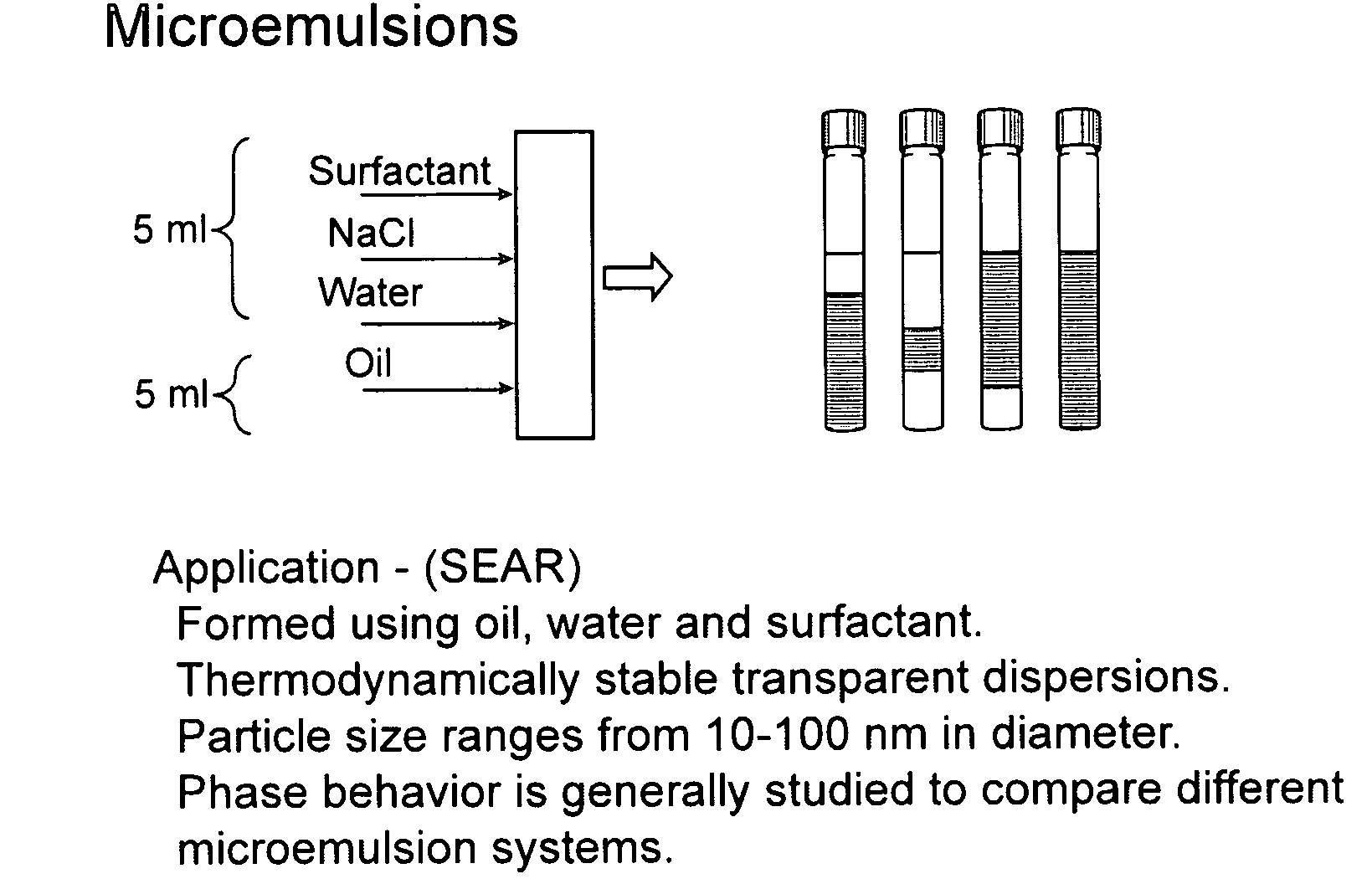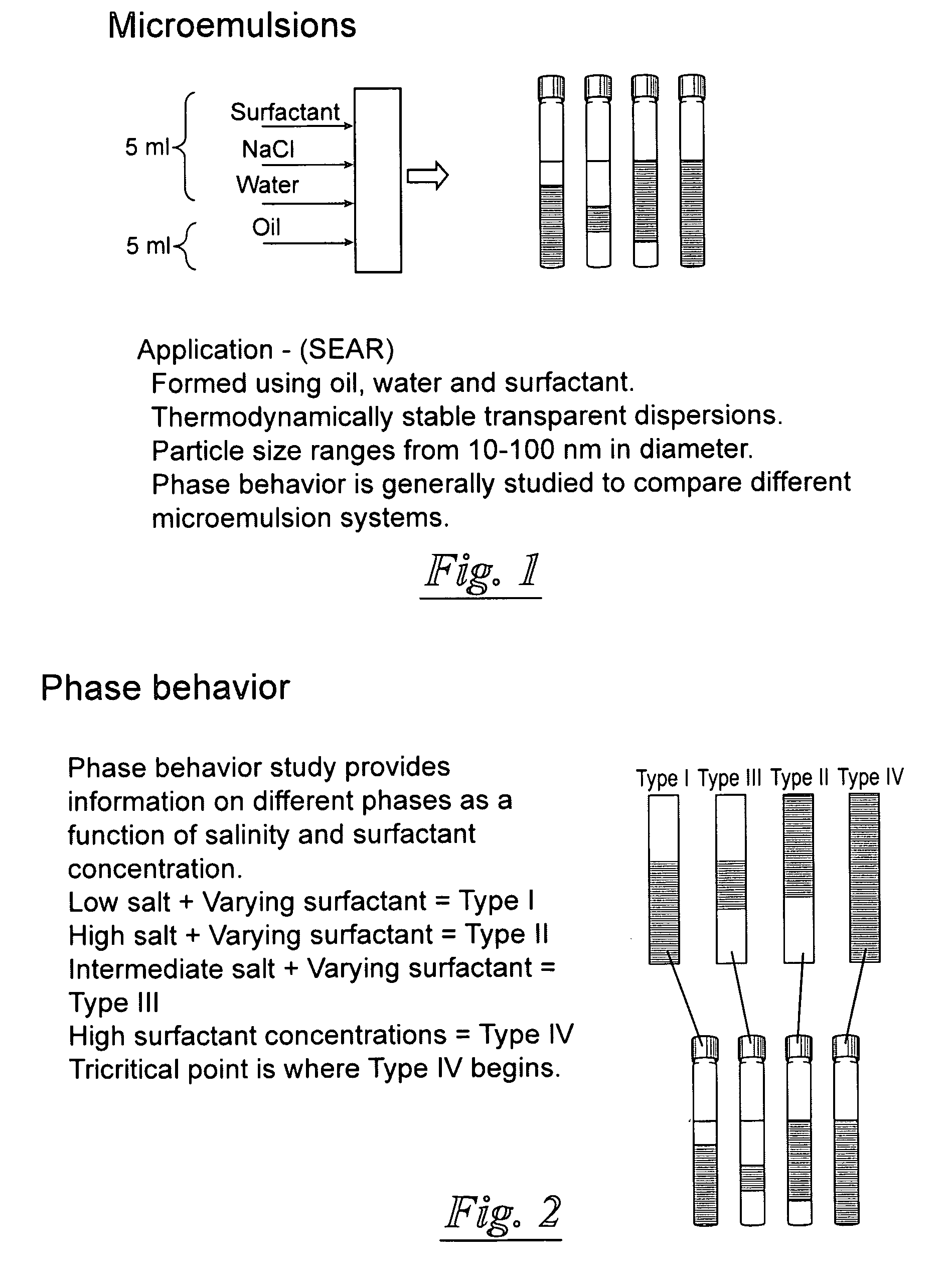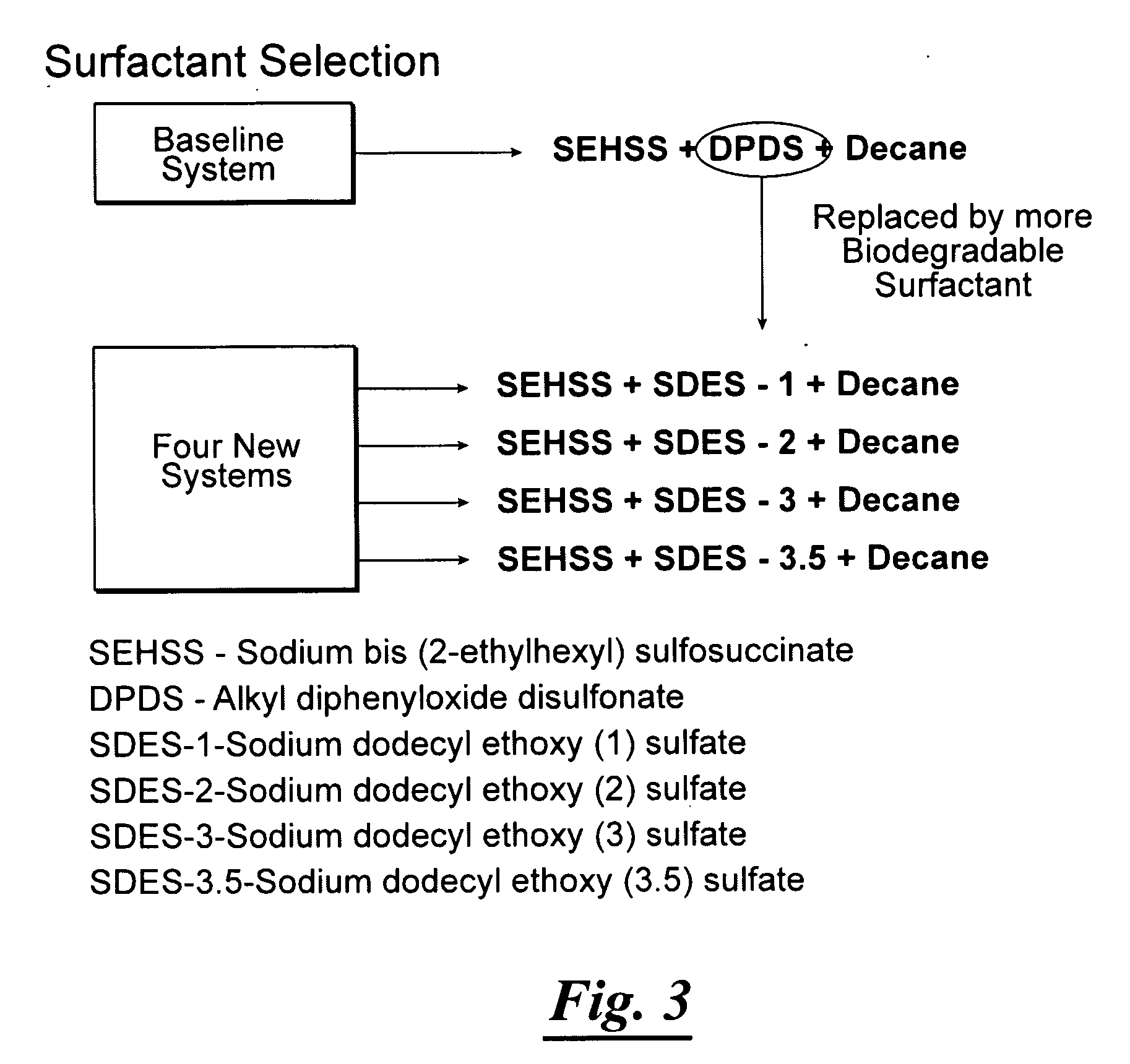Surfactant-only microemulsions for cleaning system design and product delivery
a technology of surfactant-only microemulsions and cleaning systems, applied in the direction of detergent compounding agents, cleaning using liquids, borehole/well accessories, etc., can solve the problems of high chemical cost compared to other surfactants readily available commercially, inability to formulate useful surfactant-only microemulsions, and inability to meet the needs of cleaning and other problems, to achieve the effect of improving the quality of cleaning
- Summary
- Abstract
- Description
- Claims
- Application Information
AI Technical Summary
Benefits of technology
Problems solved by technology
Method used
Image
Examples
example 1
[0065]Early attempts were made to repeat Baran et al., tests (Baran et al., 1994a, 1994b) using lower surfactant concentrations, but without success. We found that when the MA-only surfactant system was reduced in concentration to approximate 1.5 wt % surfactant, the low IFT microemulsion systems with such contaminants as PCE, TCE or petroleum gasoline fuels quickly disappeared, thus causing the system to lose effectiveness. For example, the MA-only surfactant system at concentrations less than 1.5 wt % would not retain the ability to release oil from soil grains. One possibility for losing the formation of the low IFT microemulsion may be due to the very high critical micelle concentration of MA (concentrations ranging between 1.2 wt % to 1.5 wt % in common ambient and groundwater conditions). In any event, the microemulsions formed using the single MA surfactant at low concentrations was not stable.
example 2
[0066]Though the low IFT microemulsions observed in the new binary anionic surfactants and decane were encouraging, we also found that the equilibration times for the low IFT microemulsions in these new binary surfactant mixtures (SEHSS / SDES-1, SEHSS / SDES-2, SEHSS / SDES-3 SEHSS / SDES-3.5) were less impressive than Shiau's system (U.S. Pat. Nos. 6,913,419 and 7,021,863) under ambient conditions, taking several hours to equilibrate instead of few minutes to one to two hours. Therefore, we further investigated the possibility of adding a second cosurfactant to the binary system (or so called ternary surfactant system) to improve the equilibration rate of the microemulsion. One should note that the Dowfax or Calfax surfactant used in Shiau's patents is actually a surfactant mixture including at least two different surfactants with different molecular structures. Therefore, in reality, Shiau's low IFT system is a ternary surfactant mixture. Representative results from further improvements ...
example 3
[0068]A ternary surfactant mixture solution, prepared in either deionized water or actual contaminated site groundwater, included sodium dioctyl sulfosuccinate (SEHSS, or AOT), sodium dihexyl sulfosuccinate (MA), and sorbitan monooleate (TWEEN® 80), Sorbitan monostearate (TWEEN® 60), or similar biodegradable nonionic surfactants (see Table 2). We were able to achieve the low IFT microemulsions for the weathered gasoline fuels using a salt additive, NaCl, at concentrations between 1% and 1.4% based on the weight of water in the mixture. Note that the equilibration times for the resulting low IFT microemulsions (as denoted as Type III system) are typically in minutes. Further improvement made was that all of the total surfactant concentrations were between 0.73 wt % to 0.83 wt %. In this example, all three surfactants, SEHSS, MA, and TWEEN® 80 or TWEEN® 60 are readily biodegraded in the environment. Based on this example, a mixture of sodium dioctyl sulfosuccinate (SEHSS), sodium dihe...
PUM
| Property | Measurement | Unit |
|---|---|---|
| Fraction | aaaaa | aaaaa |
| Fraction | aaaaa | aaaaa |
| Time | aaaaa | aaaaa |
Abstract
Description
Claims
Application Information
 Login to View More
Login to View More - Generate Ideas
- Intellectual Property
- Life Sciences
- Materials
- Tech Scout
- Unparalleled Data Quality
- Higher Quality Content
- 60% Fewer Hallucinations
Browse by: Latest US Patents, China's latest patents, Technical Efficacy Thesaurus, Application Domain, Technology Topic, Popular Technical Reports.
© 2025 PatSnap. All rights reserved.Legal|Privacy policy|Modern Slavery Act Transparency Statement|Sitemap|About US| Contact US: help@patsnap.com



